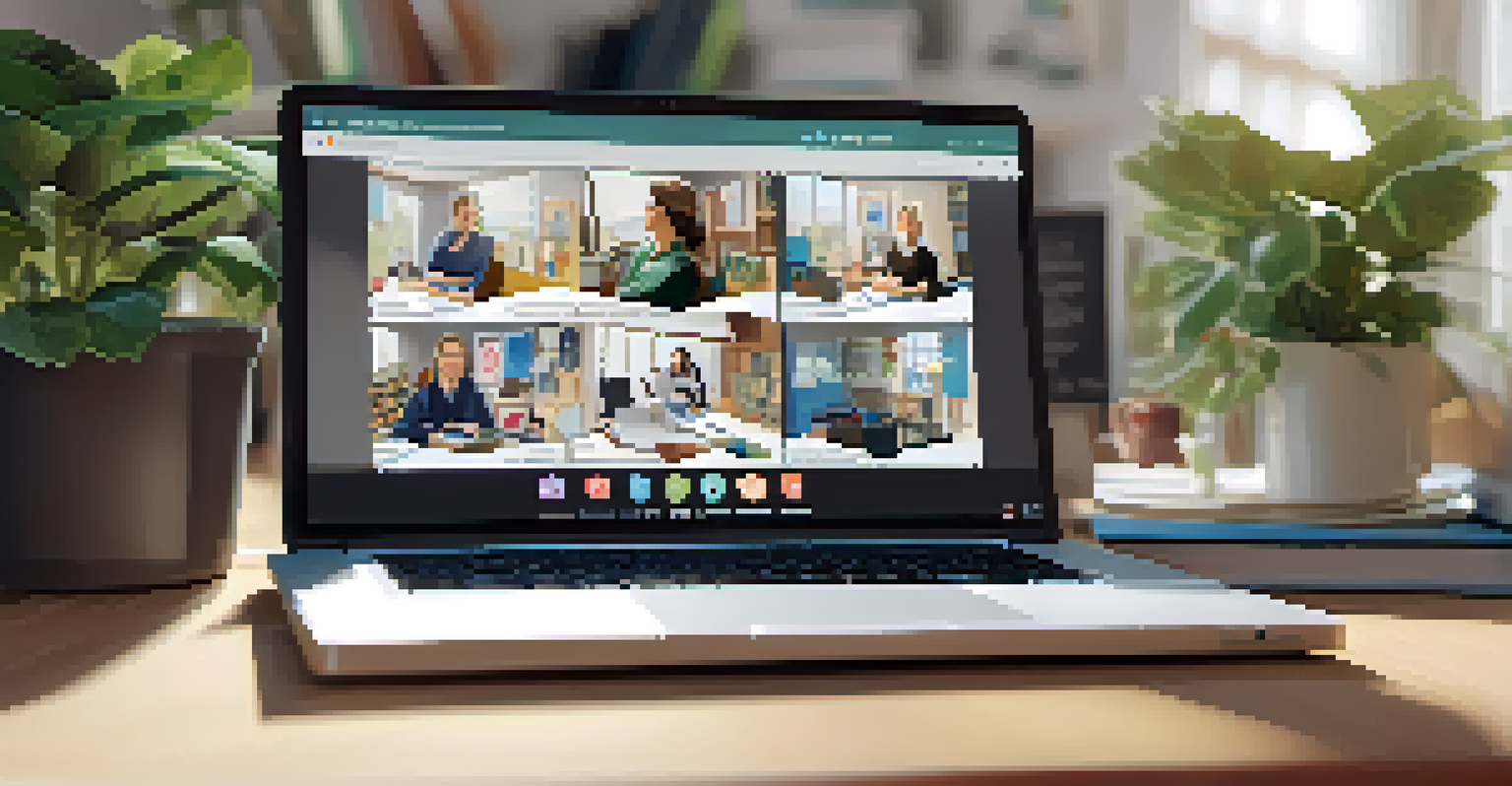OER in Global Health Education: Resources and Challenges

Understanding Open Educational Resources (OER) in Health
Open Educational Resources, or OER, are freely accessible materials that support teaching and learning. In the context of global health education, these resources can include anything from textbooks to online courses and multimedia content. The beauty of OER lies in its ability to democratize education, making high-quality resources available to students and professionals regardless of their location or financial situation.
Education is the most powerful weapon which you can use to change the world.
For instance, a medical student in a remote area can access the same high-quality materials as someone studying at a prestigious university. This equal access can significantly enhance the learning landscape, especially in low-resource settings where traditional educational materials might be scarce. As we embrace the digital age, OER stands out as a beacon of hope for equitable education in global health.
However, it's essential to recognize that not all OER are created equal. While many resources are of high quality, others may lack the rigorous review processes seen in traditional educational materials. This inconsistency can create challenges for educators and students who must navigate these resources carefully.
The Benefits of OER in Global Health Education
One of the most significant advantages of OER in global health education is cost-effectiveness. By utilizing open resources, institutions can save substantial amounts on textbooks and other educational materials. This saving can be redirected towards other critical areas, such as student support services or enhanced learning technologies.

Additionally, OER fosters collaboration among educators and institutions. For example, health educators can share their own materials and adapt existing ones to fit their specific teaching needs. This collaborative spirit not only enriches the educational experience but also promotes innovation in teaching methods.
OER Enhances Access to Education
Open Educational Resources democratize global health education by providing equitable access to quality materials for all learners.
Moreover, OER can be updated more frequently than traditional textbooks, ensuring that learners have access to the most current information. In the rapidly evolving field of global health, where new research and practices emerge almost daily, this timely access to information is invaluable.
Challenges Faced in Implementing OER
Despite its many benefits, implementing OER in global health education is not without challenges. One significant hurdle is the lack of awareness and understanding among educators and institutions about how to effectively use these resources. Many may be unsure where to find quality OER, while others might be hesitant to adopt new teaching methods.
The beautiful thing about learning is that no one can take it away from you.
Another challenge is the issue of quality control. With so many resources available online, distinguishing reliable materials from those that are outdated or inaccurate can be daunting. Educators must invest time in vetting resources to ensure they meet educational standards, which can be an overwhelming task for busy professionals.
Lastly, technical barriers can impede the effective use of OER. Accessing digital materials requires reliable internet connections and appropriate technology, which may not be available in all regions. This gap can further widen the educational divide, underscoring the need for solutions that ensure all learners have the tools they need.
How OER Promotes Lifelong Learning in Global Health
OER plays a crucial role in promoting lifelong learning among health professionals. By providing free access to resources, OER encourages continuous education, allowing practitioners to stay updated on the latest advancements in their field. This is particularly important in global health, where new challenges and solutions constantly emerge.
For example, a healthcare worker in a rural clinic can use OER to learn about the latest treatment protocols or disease prevention strategies without incurring additional costs. This accessibility not only benefits individual professionals but ultimately enhances the quality of care provided to communities, as practitioners apply their newfound knowledge.
Cost-Effective Learning Solutions
Utilizing OER can significantly reduce educational costs, allowing institutions to allocate funds to other critical areas.
Furthermore, OER fosters a culture of self-directed learning, enabling health professionals to take charge of their educational journeys. This empowerment can lead to a more motivated and informed workforce, better equipped to tackle global health challenges head-on.
The Role of Technology in OER Accessibility
Technology is a pivotal player in the accessibility of OER for global health education. The rise of online platforms and learning management systems has made it easier than ever for educators and students to share and access resources. This shift has transformed how health education is delivered, making it more flexible and adaptable to learners' needs.
For instance, mobile applications allow learners to engage with OER on-the-go, making it possible for busy professionals to study during their commutes or while on the job. This convenience can significantly increase engagement and retention, as learners can access information whenever and wherever they need it.
However, it’s essential to ensure that technological advancements are implemented thoughtfully. Providing training and support for educators and students alike can help maximize the benefits of OER, ensuring that all users can navigate these tools effectively.
Successful Examples of OER in Global Health Education
There are numerous success stories highlighting the impact of OER in global health education. For example, institutions like the Open University and Coursera offer free online courses on various health topics, reaching thousands of learners worldwide. These platforms not only provide valuable content but also foster a sense of community among learners from diverse backgrounds.
Additionally, organizations like the World Health Organization (WHO) have developed OER that focus on critical global health issues. By making these resources widely available, WHO ensures that health professionals everywhere can access essential training and information, ultimately improving health outcomes.
Challenges in OER Adoption
Despite the benefits, challenges such as quality control and lack of awareness hinder effective implementation of OER in global health education.
Such initiatives serve as a model for other institutions seeking to incorporate OER into their curricula. By learning from these examples, educators can better understand how to implement OER effectively and inspire a new generation of health professionals.
Future Directions for OER in Global Health Education
As we look to the future, the potential for OER in global health education continues to expand. With advancements in technology and a growing recognition of the importance of accessible education, we can expect to see more institutions adopting OER practices. This shift will likely lead to even more diverse and innovative educational offerings.
Moreover, collaboration among global health organizations, educational institutions, and technology providers will be crucial in enhancing the quality and reach of OER. By working together, these stakeholders can create high-quality, relevant resources that address the unique needs of diverse populations.

Ultimately, the future of OER in global health education holds promise for creating a more informed, equitable, and responsive workforce. As we embrace this educational revolution, we can contribute to better health outcomes worldwide.